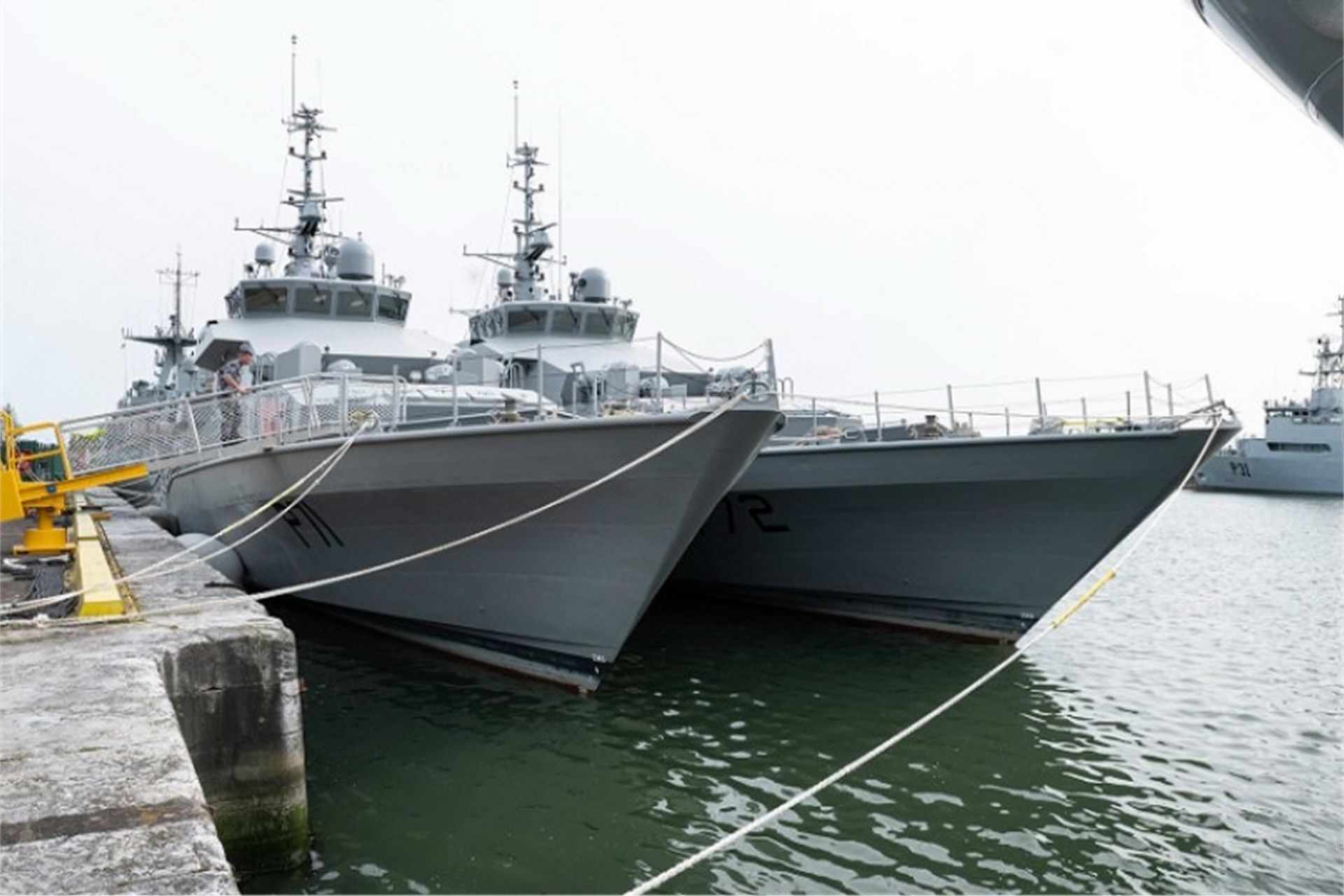Breaking News
Ireland commissions new naval vessels LÉ Aoibhinn and LÉ Gobnait.
According to information published by the Irish DoD on September 4, 2024, Tánaiste and Minister for Defence, Micheál Martin, presided over the naming and commissioning ceremonies for two newly acquired Naval Service vessels, L.É. Aoibhinn and L.É. Gobnait.
Follow Army Recognition on Google News at this link

The two Inshore Patrol Vessels L.É. Aoibhinn and L.É. Gobnait. (Picture source: Irish Government)
The two Inshore Patrol Vessels (IPVs), acquired from the New Zealand Government, feature advanced electronic warfare and intelligence gathering systems, enhancing the Naval Service's ability to navigate an increasingly complex maritime environment. The ships replace the decommissioned L.É. Orla and L.É. Ciara and require fewer crew members, with just 26 personnel needed to operate each vessel. They are equipped with Rigid Hull Inflatable Boats (RHIBs) for boarding operations and surveillance, and can reach speeds of up to 25 knots.
The Tánaiste noted that the purchase and refitting of the vessels for Irish requirements was overseen by the Naval Service and the Department of Defence. Both vessels boast automated control, modern navigation, and surveillance systems.
Irish Naval Service
The Irish Naval Service, as the maritime component of the Defence Forces, primarily focuses on maritime defense, fisheries protection, and patrol of Ireland's Exclusive Economic Zone (EEZ). The current fleet, mainly composed of Offshore Patrol Vessels (OPVs) and Large Patrol Vessels (LPVs), supports these missions, safeguarding an area of over 220 million square kilometers of Irish waters.
The OPV class, which includes vessels like LÉ Róisín and LÉ Niamh, plays a crucial role in long-range patrols. These ships are highly versatile, featuring modern navigation and surveillance systems, enabling them to conduct extended missions both in Irish waters and beyond.
They are well-suited for various operations, including search and rescue missions, maritime security, and counter-narcotic patrols. LÉ Samuel Beckett, the lead ship of the most recent class of OPVs, along with LÉ James Joyce and LÉ William Butler Yeats, further enhances the service's capabilities, with improved endurance, stability, and firepower.
One of the flagship vessels of the fleet, LÉ Eithne, stands out as the last remaining helicopter-capable ship. Though it has been primarily deployed in support of humanitarian operations in the Mediterranean, Eithne has also taken part in numerous international missions.
Historically, the Irish Naval Service has experienced periodic upgrades to replace aging vessels and improve operational capacity. These efforts are part of a broader modernization plan aimed at addressing emerging maritime challenges, such as protecting underwater infrastructure and responding to increased geopolitical tensions in the region.


























